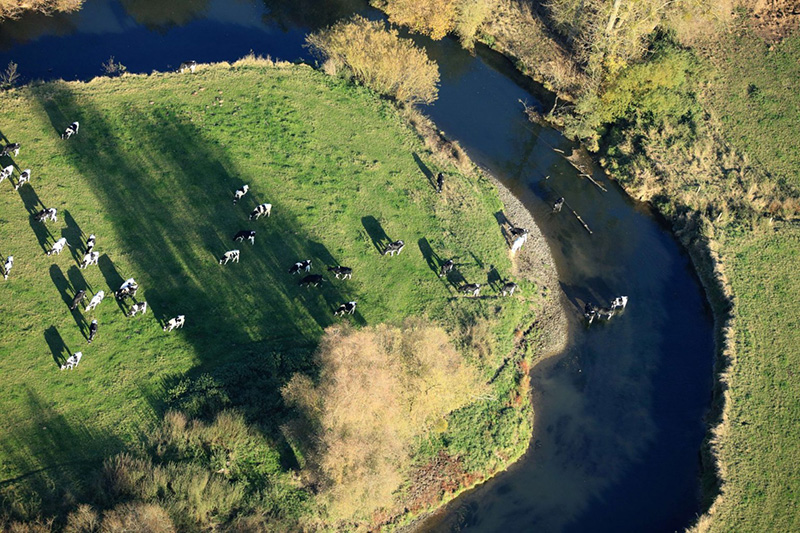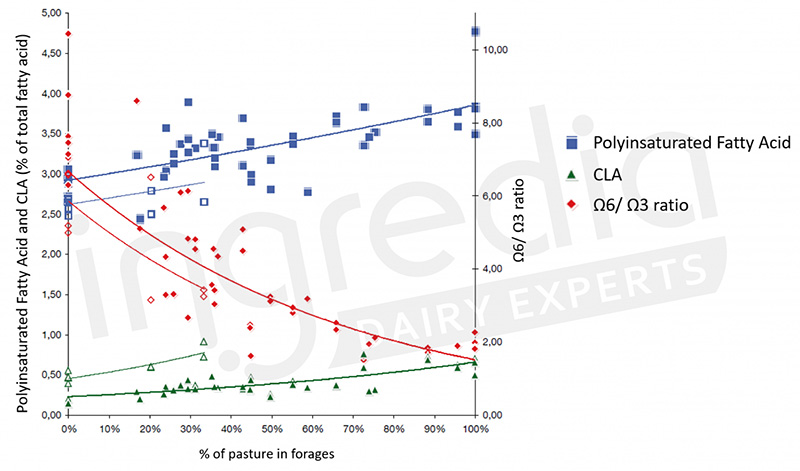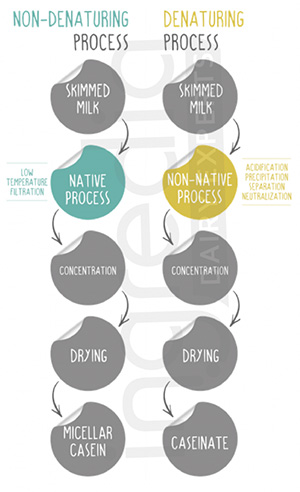Over the past few decades, interest in animal welfare has grown steadily. In August 2020, the IFOP (French Institute of Public Opinion) published a survey conducted for the Brigitte Bardot Foundation (French Foundation dedicated to animal protection) on the opinion of French regarding the animal condition. Out of a sample of 1009 people, more than 4 out of 5 persons are in favor of a prohibition on breeding animals in conditions that do not meet their needs, i.e. in closed buildings without outside access. However, in France, 4 out of 5 animals are bred under these conditions. 1
How can we fight against these farming methods?
The best way is to adopt a more responsible consumption pattern: consume products made with respect for the environment and animal welfare is the best choice to encourage this sector to develop better!
In the case of milk and dairy ingredients, it is making the choice of Ingredia and milk cooperative such as Prospérité Fermière!
What are the commitments of milk from Prospérité Fermière cooperative?
The Prospérité fermière commits to product sustainable milk through the Via Lacta approach. It is based on three points: Humans, Milk and Environment.
In the introduction of this article, we talked about breeding in closed buildings: with Via Lacta milk, respect for the living conditions of cows is at the heart of concerns. This is the reason why cows spend 170 days a year on pasture with at least 1500m² of grass per animal. We are far away from stables and their 10m² per cow.2 This is made possible by the fact that in the Hauts-de-France region, the cooperative has 1600 member-producers from 1000 family-sized farms: with an average of 50 cows, these farms are perfectly compatible with animal welfare.3
In this idea of sustainable development, the Prospérité Fermière has established a differentiating collection program. So, traditional milk and milk from grass-fed cows are only collected within an 80km radius around the St-Pol-sur-Ternoise creamery located in the region of Hauts-de-France. This allows to:
- Limit the carbon footprint of milk by reducing transport
- Boost local production while preserving grassy landscapes of the Hauts-de-France region
- Correctly remunerate breeders by fixing a minimum price per year as well as a bonus for the grass-fed milk production.3

From a product quality point of view, is milk from grass-fed cows different from conventional milk?
In addition to the eco-responsible dimension (natural and GMO-free) of promoting grass-fed milk, it is important to know that milk is a reflection of the diet of the cow which produced it.
This was studied during a 2019 review: the purpose was to compare the nutritional quality of milk from grass-fed cows and a more conventional milk. The study revealed that the milking cow’s diet had a direct impact on the fat profile of the milk:4
- Milk from Grass-fed cows contains more polyunsaturated fatty acids and less saturated fatty acids, which is positive as it is always better to reduce your saturated fatty acids intake in favor of unsaturated fats.
- Grass-fed milk contains less omega 6 and more omega 3 fatty acids. The nutritional interest of grass-fed milk is therefore superior since our diet is generally too rich in omega 6 and too low in omega 3, whereas it is important to respect a low omega 6/omega 3 ratio.
- Grass-fed milk contains more CLA (conjugated linoleic acid). A 2015 review details the positive health impact of these molecules, such as stimulating the immune system and reducing the risk of cancer and type II diabetes.5 These molecules could also stimulate metabolism, and so on increase energy expenditure. This is the reason why CLA dietary supplements can be found on the market.
A study by the Chamber of Agriculture of Brittany carried out between 2006 and 2008 demonstrates the same results.6 In figure n°1, we can observe that an increase of pasture in forages allows an increase in the proportion of polyunsaturated fatty acids, an increase in the CLA content, as well as a decrease in the omega 6/omega 3 ratio.

Figure n°1: Evolution of milk composition (polyunsaturated fatty acids, CLA and omega-6/omega-3 ratio) with the part of grass in the cows’ diet.6
Therefore, in addition to more conventional milk, the Prospérité Fermière cooperative offers this eco-friendly grass-fed milk of greater nutritional quality. Moreover, some of the Ingredia’s dairy ingredients come from this special collection milk.
Concerning dairy ingredients, why should we choose Ingredia?
The first important point is the quality of raw materials. Not all products in the dairy ingredients industry come directly from milk. Some come from co-products of other industries. For example, it is possible to use whey from cheese industry. However, proteins of this whey are usually broken down by different thermal or chemical treatments that may be done during the cheese production. Whey proteins from cheese are produced from these whey proteins.
But if a protein is denatured, it can lose some of its bioactive properties.
Concerning Ingredia’s dairy ingredients, this is not the case: the raw material is milk; therefore, ingredients are native and not broken down (native whey proteins, micellar caseins).
But in the case of casein ingredients, the raw material is necessarily milk. So they all use "native" caseins, don't they?
No, they don’t, as shown in figure n°2 there are two types of caseins:
- Micellar caseins: they are obtained by membrane filtration. So, proteins are not denatured and keep their native structure.
- Caseinates: they are obtained by a denaturing chemical process.

Figure n°2: The two processes to obtain caseins from skim milk.7
In order to preserve all caseins properties, Ingredia promotes membrane filtration, a non-denaturing physical process, and offers different micellar caseins with different functional properties depending on the application.
To summarise, Via Lacta is part of a global approach. All actors of the milk production commit themselves to respect a highly controlled specifications in order to ensure:
- Animal welfare
- An eco-responsible milk of the best possible quality
- The correct remuneration of producers
In this same idea of research for the best possible quality, Ingredia is always looking for processes that best preserve the produced ingredients.
- IFOP, “Les Français et la condition animale,” IFOP, accessed September 28, 2020, https://www.ifop.com/publication/les-francais-et-la-condition-animale/.
- Jacques Charlery and Yves Sèité, “Bien Être Des Animaux et Des Éleveurs – Les Vaches Ne s’entassent Pas,” Cap Elevage 14 (May 2007): 24–25.
- “Notre coopérative – Coopérative Prospérité Fermière,” accessed October 22, 2020, https://www.lait-prosperite.fr/notre-cooperative/.
- Mohammad Alothman et al., “The ‘Grass-Fed’ Milk Story: Understanding the Impact of Pasture Feeding on the Composition and Quality of Bovine Milk,” Foods 8, no. 8 (August 2019): 350, https://doi.org/10.3390/foods8080350.
- Bo Yang et al., “Review of the Roles of Conjugated Linoleic Acid in Health and Disease,” Journal of Functional Foods 15 (May 1, 2015): 314–25, https://doi.org/10.1016/j.jff.2015.03.050.
- Chambre d’agriculture de Bretagne, “Matière Grasse du lait : l’herbe améliore la qualité nutritionnelle des laits,” May 2009, 2.
- “La Caséine Micellaire,” Prodiet Fluid – la caséine micellaire dédiée aux boissons hyperprotéinées (blog), accessed September 28, 2020, https://www.prodiet-fluid.fr/la-caseine-micellaire/.
